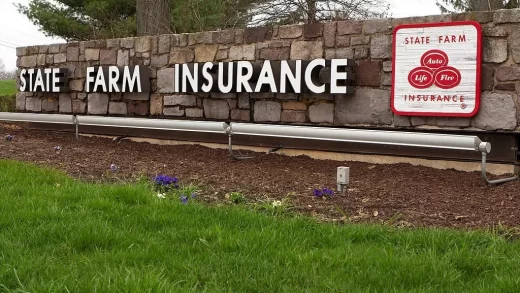What Is A Declarations Page For Auto insurance? Amazing Guide

What Is A Declarations Page For Auto insurance? The Declarations Page, often referred to as the “Dec Page,” is a critical document provided by auto insurance companies to policyholders.
It serves as a concise summary of the key information and details pertaining to an individual’s auto insurance policy.
This essential document is typically issued at the start of a policy term and contains crucial information that policyholders need to understand to make informed decisions about their coverage.
The Declarations Page acts as a snapshot of the auto insurance policy, outlining the specifics of the coverage, the vehicles insured, and the associated premiums.
It is essential for policyholders to thoroughly review and comprehend the contents of this document, as it directly impacts their financial protection in the event of an accident or other covered loss.
Throughout this outline, we will explore the essential components found in a typical Declarations Page, the significance of accurate and up-to-date information, and the importance of regularly reviewing the document to ensure adequate coverage.
By understanding the details contained within the Declarations Page, policyholders can gain peace of mind, knowing they are adequately protected on the roads and highways.
What Is A Declarations Page For Auto insurance?
Let us now delve into the key information included in the Declarations Page and its significance in the world of auto insurance.
Key Information Included In A Declarations Page
A. Policyholder Information
- Name and Address Of The Policyholder
- The legal name and mailing address of the individual or entity that owns the auto insurance policy.
- Contact Information
- Phone number and email address where the policyholder can be reached for communication regarding the policy.
- Policy Effective And Expiration Dates
- The specific dates when the policy coverage begins and ends. It’s important for policyholders to be aware of these dates to avoid coverage lapses.
B. Vehicle Information
- Description of Covered Vehicles
- Make, model, and year of each vehicle covered under the policy. This section will list all the vehicles insured by the policy.
- Vehicle Identification Numbers (VINs)
- A unique 17-character code assigned to each vehicle, allowing precise identification and verification of the insured cars.
- Usage Of Vehicles
- Indicates the primary use of each vehicle, such as personal, business, or commute. Different usage types may affect the insurance rates.
C. Coverage Types And Limits
- Limits of Liability Insurance (for Property Damage and Bodily Injury)
- The maximum amount the insurance company will pay for bodily injury or property damage to third parties in the event of an at-fault accident.
- Uninsured/Underinsured Motorist Coverage Limits
- Coverage that protects the policyholder if they are involved in an accident with a driver who lacks insurance or has insufficient coverage.
- Medical Payments Coverage (often referred to as PIP)
- Coverage for medical expenses related to injuries sustained in an accident, regardless of fault. PIP coverage varies by state.
- Comprehensive And Collision Coverage Deductibles
- The amount the policyholder must pay out-of-pocket before the insurance company covers repair or replacement costs for damages to the insured vehicles.
- Additional Coverages
- Any extra coverages or endorsements added to the policy, such as rental car coverage or roadside assistance.
D. Premiums And Payment Information
- Total Policy Premium
- The overall cost of the auto insurance policy for the coverage term.
- Premium Breakdown Per Vehicle
- The cost of insuring each individual vehicle listed on the policy.
- Due Date And Frequency Of Premium Payments
- The date when premium payments are due, as well as the frequency of payments (monthly, semi-annually, annually).
E. Policy Endorsements
- Any Endorsements or Add-ons to the Base Policy:
- Additional modifications or enhancements to the standard policy, tailored to the policyholder’s specific needs.
- Changes to Standard Coverage:
- Any alterations made to the standard coverage offered by the insurance company, providing customized protection.
By thoroughly understanding the information provided in the Declarations Page, policyholders can make informed decisions about their auto insurance coverage and ensure that they have the appropriate level of protection for their vehicles and individual needs.
Recommended: How Does Car Insurance Work? Complete Guide
Reading And Understanding The Declarations Page
A. Layout And Format Of The Declarations Page
- Section Headings: The Declarations Page typically includes clear headings for each section, making it easier to locate specific information, such as policyholder details, vehicle information, coverage types, and premiums.
- Clarity and Conciseness: The document is designed to present essential information in a straightforward manner, avoiding jargon or complex language to facilitate easy comprehension.
B. Definitions Of Key Terms And Coverage Types
- Definitions Section
Some insurance providers include a separate section or sidebar that defines the key terms used in the document.
This is particularly helpful for policyholders who may be unfamiliar with insurance terminology.
- Coverage Explanations
The Declarations Page may provide brief explanations of each coverage type and its purpose.
Understanding what each coverage entails helps policyholders know what protection they have.
C. How To Interpret Coverage Limits And Deductibles?
- Numeric Values: Coverage limits and deductibles are expressed in numerical values, indicating the maximum amount the insurance company will pay or the amount the policyholder is responsible for before insurance coverage kicks in.
- Adequate Coverage: Policyholders must ensure that coverage limits are sufficient to protect their assets and financial well-being in the event of an accident or loss.
D. Identifying Gaps In Coverage OR Insufficient Limits
- Coverage Comparison
Policyholders should compare the coverage types and limits listed in the Declarations Page with their insurance needs and state requirements.
- Addressing Gaps
If any gaps or insufficient limits are identified, policyholders can discuss potential adjustments with their insurance agent to enhance their coverage.
E. Policy Exclusions And Limitations
- Exclusion Section: Some Declarations Pages include a section that outlines specific situations or circumstances not covered by the policy.
- Limitation Clauses: The document may also specify certain limitations on coverage, such as restrictions on coverage amounts or specific scenarios.
F. Premium Payment Details
- Payment Schedule
The Declarations Page provides information on the due date for premium payments and the frequency (monthly, semi-annually, annually).
- Late Payment Consequences
Policyholders should be aware of the consequences of late premium payments, which may include policy cancellation or late fees.
G. Endorsements And Add-Ons
- Reviewing Endorsements: Policyholders should carefully review any endorsements or add-ons to understand the changes made to the standard policy.
- Coverage Enhancements: Endorsements can add valuable coverage, but policyholders need to be aware of the associated costs.
H. Policyholder Responsibility
- Accurate Information
The Declarations Page reminds policyholders of their responsibility to provide accurate and up-to-date information to the insurance company.
- Reporting Changes
Policyholders must promptly report any changes in vehicles, usage, or other relevant information to ensure continuous coverage.
By taking the time to read and understand the Declarations Page, policyholders can make informed decisions about their auto insurance coverage, avoid potential gaps or underinsurance, and have greater confidence in their protection on the road.
If any questions or uncertainties arise, policyholders should reach out to their insurance provider or agent for clarification and guidance.
Recommended: What Does Full Coverage Car Insurance Cover? Complete Guide
Importance Of Accuracy In The Declarations Page
1. Ensuring Correct Vehicle Information
- Proper Coverage
Accurate details about each insured vehicle, including make, model, and year, are crucial for determining the appropriate coverage and premiums.
- Verification
Insurance companies use the vehicle information to validate the accuracy of the policy, ensuring that the coverage matches the actual insured vehicles.
2. Validating Policyholder Details
- Policyholder Identity
Accurate policyholder information, such as name and address, ensures that the right individual or entity receives the coverage benefits.
- Communication
The insurance company relies on the provided contact information to communicate important policy updates, renewal notices, or claims-related matters.
3. Reviewing Coverage Types And Limits
- Adequate Protection
Accurate coverage limits guarantee that the policyholder has sufficient protection in case of an accident or loss.
- Avoiding Underinsurance
Inaccurate coverage limits may leave the policyholder financially vulnerable if the actual losses exceed the stated limits.
4. Complying with Legal Requirements
- State Regulations
Accurate information is necessary to meet the minimum auto insurance requirements mandated by the state in which the policyholder resides or operates a vehicle.
- Compliance
Providing false or incorrect information on the Declarations Page could lead to legal consequences or the invalidation of the policy.
5. Proper Premium Calculation
- Fair Pricing
Accurate vehicle and coverage details enable the insurance company to calculate premiums that accurately reflect the risk associated with insuring the policyholder.
- Preventing Disputes
Accurate premiums reduce the likelihood of disputes between the policyholder and the insurance company regarding payment amounts.
6. Preventing Coverage Gaps
- Identifying Gaps
Accuracy in the Declarations Page ensures that there are no gaps in coverage, where certain incidents or assets may be left unprotected.
- Addressing Changes
Policyholders must promptly update the insurance provider about any changes in vehicle usage, drivers, or other relevant information to avoid potential coverage gaps.
7. Facilitating Claims Processing
- Smooth Claims
Accurate policy details streamline the claims process, allowing for quicker and more efficient claim settlements.
- Avoiding Delays
Inaccuracies in the Declarations Page may lead to delays or denials when filing claims, causing frustration and financial burden for the policyholder.
8. Building Trust And Transparency
- Mutual Understanding
Accurate information fosters trust between the policyholder and the insurance company, ensuring that both parties have a clear understanding of the policy terms.
- Avoiding Misunderstandings
Accuracy in the Declarations Page reduces the likelihood of misunderstandings or disputes during the policy term.
How To Request Changes To The Declarations Page?
A. Contacting The Insurance Provider OR Agent
- Direct Communication: Reach out to the insurance company or your designated insurance agent via phone, email, or in person to request changes to the Declarations Page.
- Provide Policy Information: Be ready to provide your policy number and any other identifying details to ensure the correct policy is being addressed.
B. Required Documentation For Changes
- Supporting Information: Depending on the nature of the change, you may need to provide documentation or evidence to support your request.
- Vehicle Changes: If adding or removing a vehicle from the policy, provide the vehicle’s details and identification information, such as the VIN.
- Coverage Adjustments: Specify the changes you want to make to the coverage types, limits, or deductibles.
C. Understanding Policy Adjustment Costs
- Premium Changes: Be prepared for potential adjustments in your premium based on the requested changes. Some changes may increase or decrease your premium.
- Prorated Premiums: If the changes are made mid-policy term, the premium adjustment may be prorated based on the remaining duration of the policy.
D. Policy Endorsements
- Discussing Options: If you are interested in adding endorsements or additional coverage, inquire about available options that suit your needs.
- Coverage Explanations: Request a clear explanation of the endorsement’s coverage and how it enhances your existing policy.
E. Confirming The Changes
- Reviewing the Updated Declarations Page: Once the insurance provider processes your request, carefully review the revised Declarations Page to ensure all changes are accurately reflected.
- Seek Clarification: If you have any questions or concerns about the updated document, don’t hesitate to seek clarification from your insurance provider or agent.
F. Timely Reporting Of Changes
- Prompt Notification: It is crucial to report any changes to your policy as soon as they occur, such as purchasing a new vehicle, moving to a new address, or changing the primary usage of a vehicle.
- Policy Compliance: Timely reporting helps ensure that your policy remains in compliance with your state’s auto insurance requirements and that your coverage accurately reflects your current situation.
G. Documenting The Request
- Keep Records: Maintain records of all communication with your insurance provider, including emails, letters, or call logs regarding the requested changes.
- Confirmation Receipts: When making changes, ask for confirmation of receipt of your request and any necessary follow-up steps.
H. Regular Policy Review
- Periodic Checkups: Make it a habit to review your Declarations Page and overall policy at least once a year or whenever significant life changes occur (e.g., marriage, new drivers, major purchases).
- Policyholder Responsibility: It is the policyholder’s responsibility to ensure that the Declarations Page is accurate and up-to-date.
By following these steps, policyholders can request changes to their Declarations Page efficiently and effectively.
Regular communication with the insurance provider and proactive updates to the policy allow for the most accurate and tailored coverage to suit the policyholder’s needs and circumstances.
Common Mistakes To Avoid
A. Failing To Review The Declarations Page
- Ignoring The Document
Neglecting to thoroughly review the Declarations Page can lead to misunderstandings about coverage, limits, and policy details.
- Overlooking Changes
Failure to spot errors or outdated information may result in gaps in coverage or overpaying for unnecessary coverage.
B. Ignoring Updates OR Changes To The Policy
- Not Reporting Changes
Neglecting to inform the insurance provider about changes in vehicle usage, drivers, or other relevant details can invalidate coverage in certain situations.
- Delayed Updates
Delaying updates to the policy could lead to disputes during claim processing or affect premium accuracy.
C. Overlooking Important Policy Details
- Coverage Limits
Failing to understand coverage limits may result in inadequate protection during an accident or loss.
- Deductibles
Ignoring deductible amounts may lead to unexpected out-of-pocket expenses when filing a claim.
D. Providing Inaccurate Information
- False Details
Intentionally providing false or misleading information on the Declarations Page can lead to policy cancellation and potential legal consequences.
- Omitting Information
Neglecting to disclose relevant information, such as previous accidents or traffic violations, can impact coverage and claim validity.
E. Not Verifying Vehicle Information
- Incorrect Vehicle Details
Failing to verify accurate vehicle information may result in coverage discrepancies or incorrect premium calculations.
- Missing VINs
Omitting or mistyping Vehicle Identification Numbers (VINs) could lead to confusion during claims processing.
F. Neglecting Policy Endorsements
- Unawareness Of Endorsements
Not understanding available endorsements may cause policyholders to miss out on valuable coverage options.
- Inappropriate Endorsements
Choosing irrelevant endorsements may result in unnecessary expenses and inadequate coverage.
G. Procrastinating Premium Payments
- Late Payments
Delaying premium payments may lead to policy lapses and potential coverage loss.
- Non-Payment Consequences
Failing to pay premiums on time can result in late fees or policy cancellation.
H. Not Seeking Professional Guidance
- Lack Of Expert Advice
Failing to consult with an insurance agent or expert can lead to uninformed decisions about coverage needs and policy adjustments.
- Misunderstanding Coverage
Not seeking clarification on policy terms and coverage options may result in unexpected surprises during claim situations.
I. Neglecting Regular Policy Reviews
- Missed Opportunities
Not conducting periodic policy reviews may cause policyholders to miss potential cost-saving opportunities or beneficial coverage changes.
- Outdated Information
Neglecting regular reviews may result in outdated information and inaccurate coverage.
By avoiding these common mistakes, policyholders can maintain accurate and up-to-date auto insurance coverage that aligns with their needs, provides financial protection, and offers peace of mind on the road.
Being proactive, informed, and attentive to policy details ensures that the auto insurance policy remains reliable and effective throughout its term.
Conclusion
In conclusion, the Declarations Page is a crucial document that outlines vital information about auto insurance coverage.
Ensuring accuracy in the Declarations Page is paramount, as it impacts policyholders’ protection, compliance with legal requirements, and premium calculations. You can visit Globlar.com for news and more updates!
By avoiding common mistakes and proactively reviewing and updating the document as needed, policyholders can have confidence in their coverage and be well-prepared for any unforeseen events on the road.














